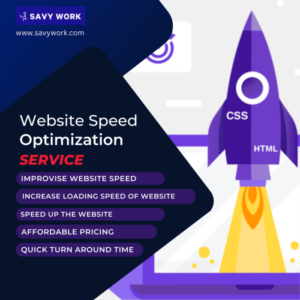
OTT streaming services growth marks a transformative era in the entertainment industry, reshaping how audiences consume content. With the rise of digital platforms, traditional viewing habits are evolving, and companies are adapting to meet the increasing demand for on-the-go access to films and series.
As more consumers shift towards subscription-based models, understanding the underlying trends and strategic marketing approaches becomes essential for both new entrants and established players in the market.
OTT Streaming Services Market Trends
The OTT (Over-The-Top) streaming services market has been experiencing a significant transformation, driven by a myriad of factors that cater to the evolving preferences of consumers. This rapid growth has created a dynamic landscape where traditional media is increasingly challenged by digital platforms that offer convenience and flexibility. As viewers shift towards online content consumption, the market trends reflect a robust environment filled with opportunities for innovation and expansion.Several factors contribute to the ongoing growth of OTT streaming services.
The rise of high-speed internet access has made streaming more accessible than ever, allowing users to consume content on a range of devices without buffering issues. Additionally, the proliferation of smart devices, including smartphones, tablets, and smart TVs, has further fueled this trend by enabling on-the-go viewing. The COVID-19 pandemic also played a pivotal role in accelerating the adoption of OTT platforms, as consumers sought entertainment options while adhering to social distancing measures.
Key Players in the OTT Market and Their Expansion Strategies
The OTT streaming landscape is dominated by several key players who employ various strategies to enhance their market presence and reach. These companies leverage unique content offerings, innovative technology, and strategic partnerships to attract subscribers.
- Netflix: Known for its extensive library of original content, Netflix has invested heavily in producing high-quality series and films that appeal to diverse demographics. The company continues to explore international markets by localizing content to cater to regional tastes.
- Amazon Prime Video: Amazon combines its streaming service with its e-commerce platform, providing added value to its subscribers. Prime Video has also focused on securing exclusive content and sports broadcasting rights to differentiate itself from competitors.
- Disney+: Disney+ capitalizes on its vast catalog of beloved franchises and family-friendly content. The platform’s strategy includes leveraging its existing intellectual property to attract subscribers, particularly families and younger audiences.
- Hulu: Hulu’s unique selling proposition lies in its combination of live TV and on-demand streaming. The service has pursued partnerships with cable networks to offer an extensive range of viewing options, appealing to users who prefer a hybrid model.
The impact of consumer behavior on OTT service subscriptions is profound. As viewers increasingly demand tailored content, personalization has become a central tenet of successful OTT platforms. The use of algorithms to recommend shows and movies based on viewing history enhances user engagement and satisfaction.
“Consumers are prioritizing flexibility and quality in their viewing experiences, leading to a surge in subscription-based models.”
Another vital aspect is the trend towards bundling services, where consumers prefer packages that offer multiple streaming options at a reduced price. This behavior reflects a shift towards value-seeking as subscribers weigh their options and seek to maximize their entertainment spending.Overall, the intersection of technology, consumer preferences, and strategic positioning among key players creates a vibrant OTT streaming service ecosystem, one that continues to evolve and expand in response to market demands.
Marketing Strategies for OTT Platforms
The competitive landscape of OTT platforms requires innovative and dynamic marketing strategies to capture audience attention and drive subscriptions. With a diverse array of content options available, platforms must distinguish themselves through targeted marketing efforts that align with viewer preferences. This section delves into effective marketing strategies tailored specifically for OTT services.
Search Engine Marketing Plan for OTT Services
A well-crafted search engine marketing (SEM) strategy is essential for increasing visibility and attracting potential subscribers to OTT platforms. Implementing a tailored SEM plan involves several key components:
- Research: Identify high-ranking s relevant to the OTT service’s content offerings, such as “best streaming service for movies” or “exclusive TV series.” Utilize tools like Google Planner to uncover popular search terms.
- Targeted Ads: Develop pay-per-click (PPC) campaigns on search engines like Google and Bing. Focus on specific demographics and geographic locations to maximize reach and relevance.
- Landing Pages: Create optimized landing pages that directly relate to the s being targeted. Ensure these pages are informative, engaging, and clearly Artikel the unique features and benefits of the OTT service.
- Retargeting Campaigns: Implement retargeting strategies to re-engage users who have previously visited the platform. Tailor ads to remind them of content they viewed or to promote new releases.
Video Marketing Strategy for Unique Content Offerings
Video marketing serves as a powerful tool for showcasing the unique content offerings of an OTT platform. A strategic approach to video marketing can effectively engage viewers and convert them into subscribers.
- Teaser Trailers: Produce short, captivating teaser trailers for new series or films. Highlight compelling visuals and intriguing storylines to entice viewers to subscribe for full access.
- Behind-the-Scenes Content: Create behind-the-scenes videos that showcase the production process, interviews with cast and crew, and insights into the story development. This type of content builds a connection with the audience.
- User-Generated Content: Encourage subscribers to share their thoughts or reviews through video content. Showcase these user-generated videos on social media to enhance community engagement and authenticity.
- Live Streams: Host live streaming events, such as Q&A sessions with creators or live premieres of new episodes. This interactive format fosters real-time engagement and excitement.
Utilization of Social Media to Promote OTT Features
Social media serves as a vital channel for promoting the features and benefits of OTT platforms, allowing for direct interaction with potential subscribers.
- Targeted Social Ads: Utilize platforms like Facebook, Instagram, and Twitter to run targeted ads that highlight specific features, such as exclusive content or subscription deals. Tailor visuals and messaging to fit the platform’s audience.
- Content Sharing: Regularly share engaging content, including trailers, clips, and highlights from popular shows. Leverage hashtags and trending topics to increase visibility.
- Influencer Collaborations: Partner with social media influencers who resonate with the target audience. Influencers can introduce the OTT service to their followers, providing authentic recommendations.
- Community Engagement: Create interactive polls, quizzes, and contests that encourage audience participation. Prompt discussions around favorite shows or characters to foster a sense of community.
Technology and Security in Streaming

As the OTT streaming industry continues to grow, the integration of advanced technology and robust security measures is essential for delivering a seamless user experience while ensuring the protection of sensitive user data. The competition among platforms highlights the need for reliable web hosting solutions that guarantee consistent service delivery, alongside effective measures to safeguard user information from cyber threats.
Web Hosting Solutions for OTT Service Delivery
Reliable web hosting is crucial for the uninterrupted delivery of streaming services. The choice of hosting solutions directly impacts performance, load times, and overall user experience. Several hosting options provide varying benefits:
- Content Delivery Networks (CDNs): CDNs distribute content across multiple servers globally, reducing latency and improving load times for users regardless of their location. This scalability is vital for handling peak traffic during popular show releases.
- Cloud-Based Hosting: Cloud solutions offer flexibility and scalability, allowing OTT platforms to adjust resources based on demand. This model helps in managing costs effectively while ensuring high availability and performance.
- Dedicated Servers: For platforms with a large user base, dedicated servers can provide high performance and reliability. They allow for full control over the server environment and can be optimized for specific needs.
Internet Security Measures for User Data Protection
The security of user data on streaming platforms is paramount, especially as cyber threats continue to evolve. Implementing robust internet security measures can help protect sensitive information and enhance user trust. Key security practices include:
- Encryption: Using HTTPS and encrypting data transfer protects user information during transmission, making it difficult for unauthorized parties to intercept.
- Regular Security Audits: Conducting periodic audits helps identify vulnerabilities and ensures that security practices are up-to-date with the latest standards.
- Authentication Protocols: Multi-factor authentication (MFA) enhances security by requiring users to provide multiple forms of verification before accessing their accounts.
Comparative Analysis of Video Streaming Technologies
Various video streaming technologies have emerged, each with distinct characteristics that enhance the user experience. Understanding these technologies can help OTT platforms choose the right approach for their services.
- Adaptive Bitrate Streaming (ABR): ABR dynamically adjusts the video quality based on the user’s internet speed, providing a smooth viewing experience without buffering. This technology is widely used by platforms like Netflix and YouTube.
- HTML5 Video Streaming: With HTML5, video content can be streamed directly in web browsers without requiring additional plugins, making it more accessible across devices.
- Low-Latency Streaming: This technology minimizes the delay between content creation and consumption, which is especially important for live events such as sports broadcasts.
Closing Summary

In conclusion, the growth of OTT streaming services is not just a fleeting trend but a significant shift in consumer behavior and market dynamics. As technology advances and more players enter the field, the strategies developed today will shape the future of entertainment consumption.
Quick FAQs
What are OTT streaming services?
OTT streaming services deliver content directly to viewers over the internet, bypassing traditional broadcasting methods.
How has consumer behavior changed with OTT services?
Consumers now prefer on-demand content and flexible viewing options, leading to increased subscription rates for these services.
What are the major players in the OTT market?
Key players include Netflix, Amazon Prime Video, Hulu, and Disney+, each employing unique strategies to attract and retain subscribers.
What marketing strategies are effective for OTT platforms?
Effective strategies include targeted social media campaigns, engaging video marketing, and optimized search engine marketing.
How important is security for OTT streaming services?
Security is critical for protecting user data and maintaining consumer trust, necessitating robust internet security measures.





